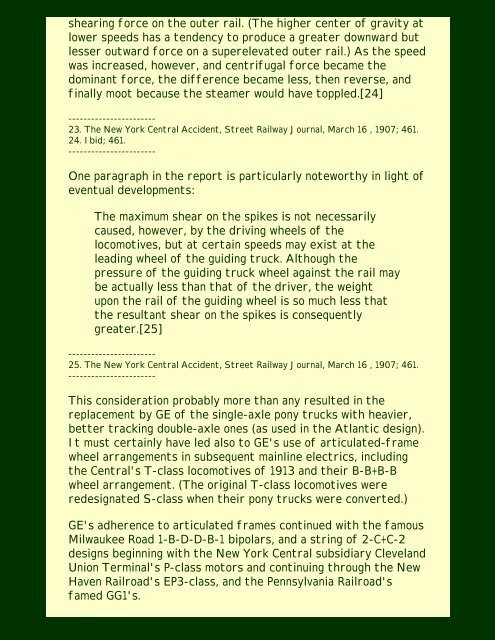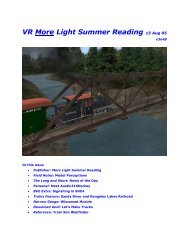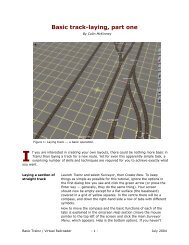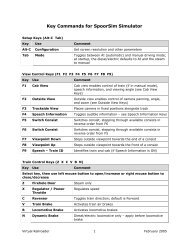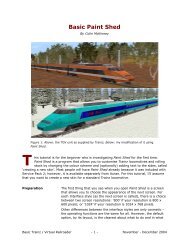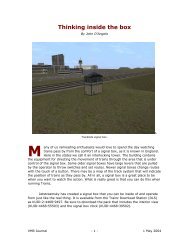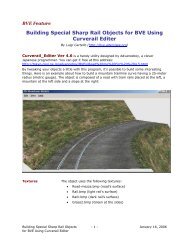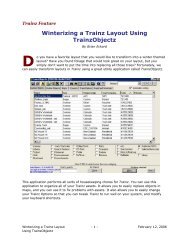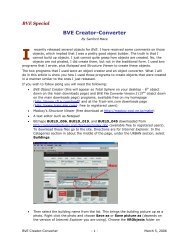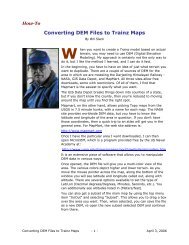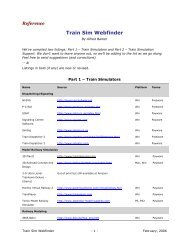Old Maude, Preface - Virtual Railroader
Old Maude, Preface - Virtual Railroader
Old Maude, Preface - Virtual Railroader
You also want an ePaper? Increase the reach of your titles
YUMPU automatically turns print PDFs into web optimized ePapers that Google loves.
shearing force on the outer rail. (The higher center of gravity at<br />
lower speeds has a tendency to produce a greater downward but<br />
lesser outward force on a superelevated outer rail.) As the speed<br />
was increased, however, and centrifugal force became the<br />
dominant force, the difference became less, then reverse, and<br />
finally moot because the steamer would have toppled.[24]<br />
-----------------------<br />
23. The New York Central Accident, Street Railway Journal, March 16 , 1907; 461.<br />
24. Ibid; 461.<br />
-----------------------<br />
One paragraph in the report is particularly noteworthy in light of<br />
eventual developments:<br />
The maximum shear on the spikes is not necessarily<br />
caused, however, by the driving wheels of the<br />
locomotives, but at certain speeds may exist at the<br />
leading wheel of the guiding truck. Although the<br />
pressure of the guiding truck wheel against the rail may<br />
be actually less than that of the driver, the weight<br />
upon the rail of the guiding wheel is so much less that<br />
the resultant shear on the spikes is consequently<br />
greater.[25]<br />
-----------------------<br />
25. The New York Central Accident, Street Railway Journal, March 16 , 1907; 461.<br />
-----------------------<br />
This consideration probably more than any resulted in the<br />
replacement by GE of the single-axle pony trucks with heavier,<br />
better tracking double-axle ones (as used in the Atlantic design).<br />
It must certainly have led also to GE's use of articulated-frame<br />
wheel arrangements in subsequent mainline electrics, including<br />
the Central's T-class locomotives of 1913 and their B-B+B-B<br />
wheel arrangement. (The original T-class locomotives were<br />
redesignated S-class when their pony trucks were converted.)<br />
GE's adherence to articulated frames continued with the famous<br />
Milwaukee Road 1-B-D-D-B-1 bipolars, and a string of 2-C+C-2<br />
designs beginning with the New York Central subsidiary Cleveland<br />
Union Terminal's P-class motors and continuing through the New<br />
Haven Railroad's EP3-class, and the Pennsylvania Railroad's<br />
famed GG1's.


